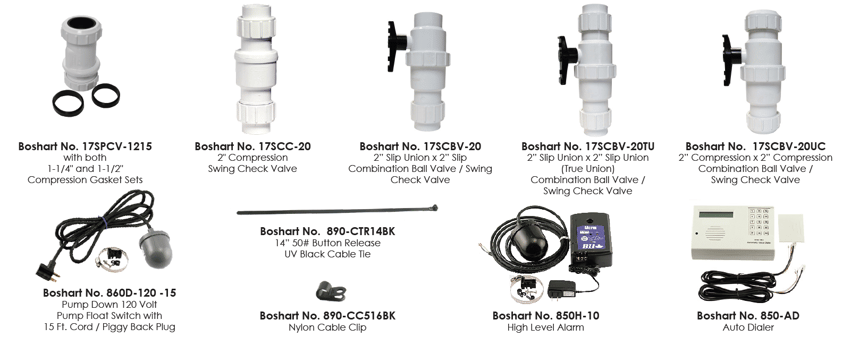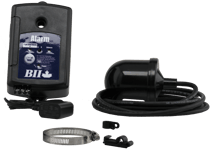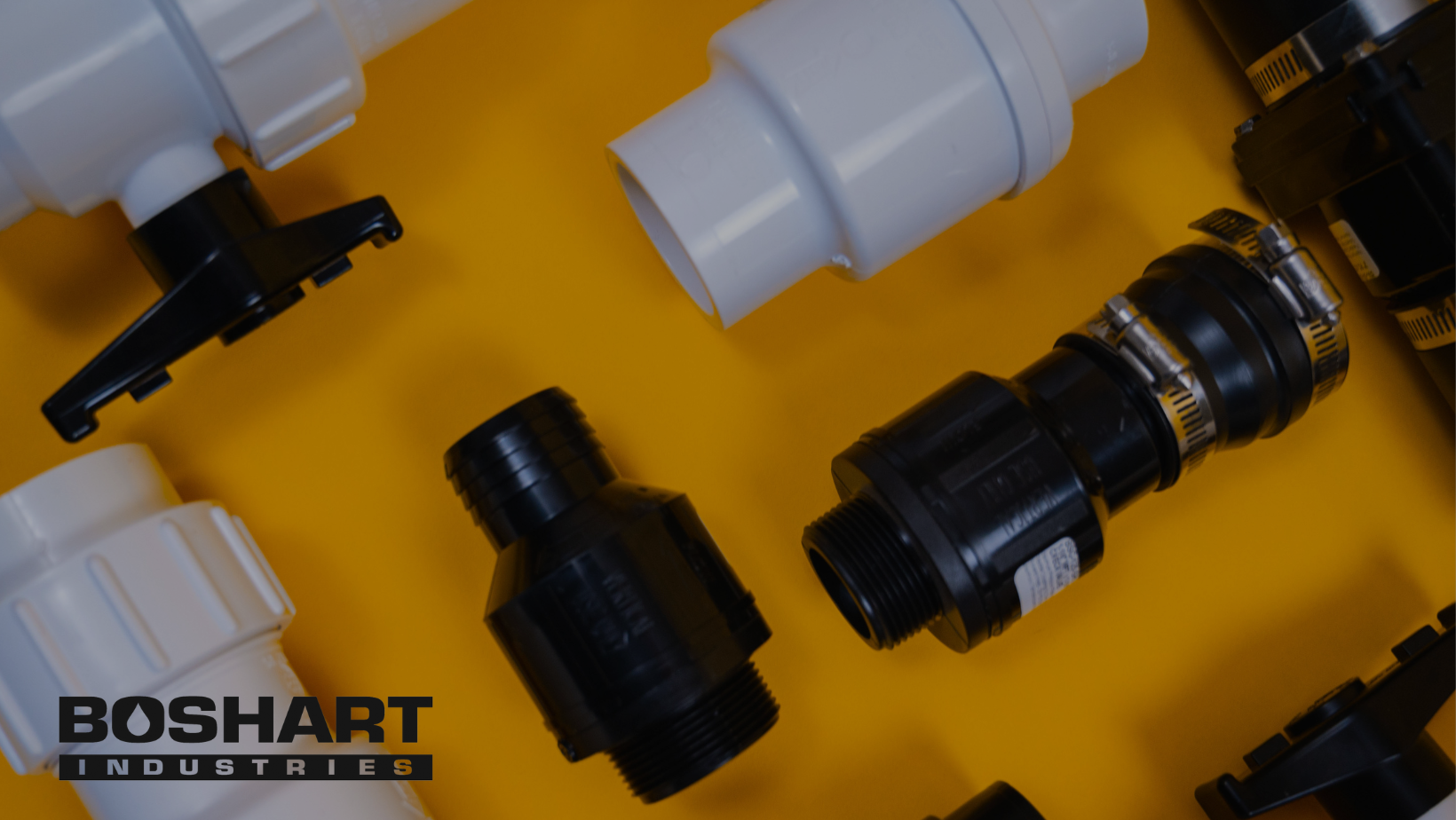Installing a sump pump—like most plumbing installations—comes with its own unique set of challenges and necessary knowledge to execute properly. There’s a lot that can go wrong if you don’t really know what you’re doing.
Thankfully, we’ve put together this ultimate guide on how to reduce problems with your sump pump system. Following the installations tips below can greatly reduce the risk of property damage because a component in your sump pump system failed.
How long will my sump pump system last?
How long sump pumps, check valves and other components will last is almost impossible to answer. It’s kind of like asking how long your fridge, your lawn mower, or your car will last: it simply depends on too many factors to say definitively.
If you have a small sump basin (pit) and a lot of surface water in your area, the pump may have to run several times per hour. Naturally, that pump is not going to last as long as the same pump in the home of someone with a large sump pit and very little water entering your sump basin or pit where the pump only has to run once a day or a few times a month or year.
Choosing a pump, check valve, and piping that is properly sized to your conditions is the first step. Next is choosing a float switch and setting an appropriate tether length for your sump pit, ensuring a reliable electrical supply in order to provide the longest possible life for your sump pump system.
For more information, check out our Knowledge Base article, Setting the Tether Point and Tether Length on a Sump Pump Float Switch.
Backup Components
It is not a matter of if, but rather when one of the critical components will fail. For this reason, the proper precautions must be taken into consideration when designing a system to ensure that an adequate back up system is in place. Additionally, the system must be regularly checked to ensure all components are working properly.
Having a backup or secondary pump is like having insurance on your car or home. It’s only needed when it’s really needed. A battery backup pump can be standing by to operate when your main pump cannot (whether due to a power outage, an abnormally high volume of incoming water, or even main pump failure). Having a second AC-powered sump pump in the pit can protect you in case the main pump simply can’t keep up, or if the main pump fails, but it cannot help you if the power goes out.

Important Sump Pump System Components:
1. End Blocking
When using compression type check valves (such as the Series 17SPCV or 17SCC swing check valves and/or 17SCBV Combination ball and check valves), what’s called “End Blocking” or “Thrust Blocking” is required to firmly secure discharge pipe. When done properly, the risk of joint separation (pipe blow-out) due to hydraulic shock is completely eliminated. (See 7 & 16)
2. Dedicated Electrical Circuit
Each electrical component of a sump pump system must be wired directly to a dedicated circuit to prevent catastrophic system failure if one circuit were to fail.
3. Ice Guard Device®
The installation of a Sump Pump Air Device gap, or Ice Guard® Device in each discharge line outside of the homes wall is recommended in all systems. This will prevent any backups caused by blockages in the discharge pipe caused by foreign debris. Northern regions where drainage lines could freeze could also be the cause. The air gap allows the water to escape onto the ground.
4. Discharge Distance
Outdoor drain piping should discharge water past the back-fill zone, at least 10 feet from foundation wall.
CAUTION: Building codes may vary. Always make sure sump pump discharge is in compliance with local plumbing codes and regulations.
5. High Level Alarm & Audio Dialer
A high level alarm, connected to an auto dialer is a great investment, advising of a pending system failure when no one is home (be assured: failure will occur at the most unexpected time). Being alerted whether you’re at home or away allows for corrective actions can be taken before serious property damage occurs.
Diagram of an Ideal Sump Pump System
Don’t be intimidated: our ideal sump pump system is a lot easier to comprehend when you logically walk through the system from start to finish.
Read on for explanations of each component and a ton of insider tips and tricks to make your system as robust as possible.

1. Main Sump Pump (120VAC or 240VAC Electric)
2. Back-Up Sump Pump (120VAC or 240VAC) Electric connected to automatic standee generator in case of power failure and or an additional 12V Battery Back Up System is recommended wherever pump failure could result in property damage.
3. Main Pump Float Switch with Piggy Back Plug - Boshart Series No. 860D / 862D
NOTE: Sump Pumps must be powered by a dedicated power circuit (See “C1 & C2”)
4. Back Up Pump Float Switch with Piggy Back Plug - Boshart Series No. 860D / 862D NOTE: This switch is typically installed at a slightly higher “pump -on” level and will provide added pumping capacity in the event the main pump cannot handle the incoming water volume, and or will provide back up in the event the main pump fails or the C1 breaker trips (fuse blows). The back up pump must also be powered by a dedicated power circuit “C2”.
TETHER POINTS:
A float switch is the most common type of switch used for sump pumps. It is a floating element which means the switch cord is typically tethered to the pump discharge pipe and the float swing in an arc as the water level rises and falls. A float switch consists of a spheroidal, hollow vessel with a switch inside.
As the water rises, it causes the float to rise and the tether causes the switch to flip and turn on the pump. When the water level drops, the float drops and the float will tilt downward. This causes the switch mechanism to trip, shutting off the pump. The length of the tether changes the pump range.
The tether points can easily be made and adjusted using a cable tie - Boshart No. 890-CTR14BK refer to the float switch tether length chart for desired pumping range.
DEDICATED POWER CIRCUITS:
Dedicated Power Circuits from Breaker Panel for each component are curtail in preventing catastrophic system failure.
NOTE: Building codes will typically require a ground fault circuit interruption (GFCI) outlet at a minimum of 4 feet from floor on a dedicated circuit as the power source for a sump pump. Always reference all the applicable plumbing and building codes for your area.
SECURE PLUG:
The Piggy Back Plugs must be secured to ensure they do not accidentally come disconnected from the outlet. If the plug is loose in the receptacle, replace the receptacle immediately. Secure plug / cord with Boshart No. 890-CC516BK Nylon cable Clip
5. Swing Check Valve for Main Pump (Boshart Series No. 17SPCV / 17SCC / 17SCTU) - Swing Check Valves perform best when installed in vertical position, in the event the valve must be installed horizontally it is critical to install the valve in the proper orientation as marked on the valve body to ensure the flapper operates properly.
6. Swing Check Valve for Back Up Pump
NOTE: A minimum of 2 feet of static head above the valve is required, the installation of the check valve just above the sump basin cover (with in 1-2 ft.) will provide 5-7 feet of head depending on the height to discharge to the outside, this is ideal for swing check valve operation.
7. Discharge Piping for Main Sump Pump - When using either a flexible rubber coupling or a compression type check valves such as the Series 17SPCV or 17SCC swing check valves and or 17SCBV Combination ball and check valves “End Blocking” or “Thrust Blocking” must be installed to firmly secure discharge pipe. When done properly the risk of joint separation (pipe blow-out) due to repeated hydraulic shock is completely eliminated. Never join discharge pipes into one single discharge pipe through the wall to the outside.
8. Discharge Piping for Back Up Sump Pump
9. Ice Guards for Main Discharge - An “Ice Guard System” is a fitting that attaches to the top of your discharge pipe on the outside of your home one is required for each sump pump installed in your home. Slotted openings along the outer facing side of the fitting, provides an alternative (second way) for the water to escape out in the event the discharge pipe becomes clogged with ice or debris.
10. Ice Guards for Backup Discharge Pipe
11. Out-Door Discharge Pipe for Main Sump Pump - Discharge Pipes should discharge water past the back - fill zone, at least 10 feet from foundation wall. Otherwise, the water will reabsorb into the soil, seeping back down into the weeping tile, making its way back into your sump pump basin. A constant flow of water will damage your foundation, contribute to erosion and quickly wear out your sump pump.
12. Out-Door Discharge Pipe for Back Up Sump Pump
13. High Level Alarm with 9 Volt Battery Back Up - Boshart Series No. 850H-XX C3 - The alarm must be on a dedicated circuit from breaker panel “C3”
NOTE: Building codes will typically require a ground fault circuit interruption (GFCI) outlet at a minimum of 4 feet from floor on a dedicated circuit as the power source for an alarm system. Always reference all the applicable plumbing and building codes for your area.

14. Control Float Switch for High Level Alarm (Included with 850H series alarm) Replacement control switch (BII No. 880N0-10)
22. Auto Dialer (Boshart No. 850-AD)
An auto dialer provides a notification if either there is an equipment malfunction or a high-water level alarm condition due to abnormal volume of incoming water. Receiving a notification while you are away from home allows you time to get the situation under control.
23. Sump Pump Basin (Pit) - Depending on the size of the sump basin, there may not be enough room for multiple float switches without the risk of entanglement. The alarm circuit can be equipped with a probe type water sensor, Boshart No, 850-WSP.
24. Floor Drain
25. Interior Drain Tile at Perimeter
26. Weeping Tile
In Conclusion:
Redundancy in your sump pump system is one of the greatest assurances that your home is protected. Your sump pump sees the most usage in extreme weather conditions, and failures under these circumstances can be catastrophic if unchecked.
Utilizing this guide, we firmly believe you greatly mitigate any risk of significant property damage.
Anything we missed? Still have questions? Feel free to contact us and we can help you.
Have further questions about this subject?

Head over to Boshart's Knowledge Base: technical product information, guidelines, and more.





SHARE